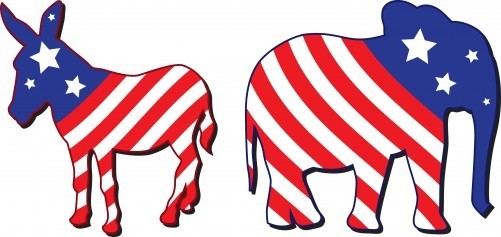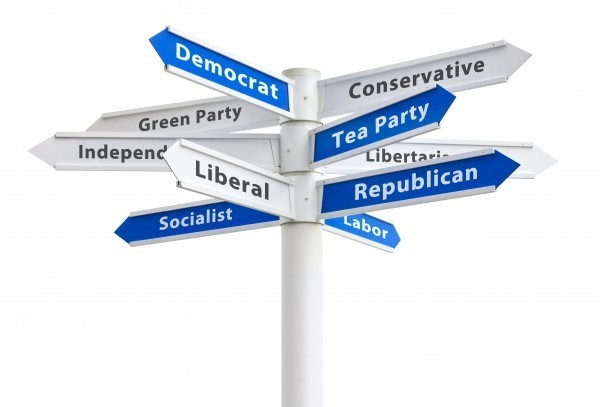From the conception of our country, the people have been split in factions. During the Revolutionary War, it was loyalists, patriots and those who didn’t side with either. When our framers were deciding first the Articles of Confederation and then our Constitution, it was Federalists and Anti-Federalists. Now, we have the Republican and Democratic Party. So how did they come to be?
The Beginnings of Parties and Factions
Our very first president, George Washington, was actually against political parties, even explicitly writing in his Farewell Address the dangers of allowing political parties to form. In Washington’s view, parties would allow “cunning, ambitious, and unprincipled men” to misguide the trust of the people in a way that would allow them to gain more control and power of the government. Unfortunately, Washington was the only president who didn’t align with a party.
What was the First Political Party?
Less of a party than a faction, The Federalist Party was what John Adams, our second president, aligned with. It’s considered more as a faction, partly because the Federalist Party didn’t necessarily have a cohesive, all-encompassing platform; they just advocated for a specific issue (the most well-known being how much power the federal government should yield; Federalists wanted a central government), and then faded away after the issue was resolved.
Anti-Federalists came about as a response to Federalists and advocated for states’ rights and later changed their name to become the Republican Party, and later Democratic-Republican Party. By 1815, the Federalists ceased to keep their hold and ended as a party.

The Rise of Republican Party and Democratic Party
With the fall of the Federalist Party, the Democratic-Republican Party then split into what we now know as the Republican and Democratic Party. The split first happened when those who supported John Quincy Adams and those supported Henry Clay teamed up on the issue of increasing national defense and named themselves the National Republican party in 1824. When Andrew Jackson was elected president in 1829, his supporters (the remainder of the Democratic-Republican Party) then dropped “Republican” from their name and simply called themselves the Democratic Party.
When did the Switch in Platforms Occur?
Considering the 1860s version of the Republican Party (heavily populated in the north) advocated for expanding federal power and the Democratic Party (heavily populated in the south) wanted less government involvement, it’s clear that somewhere along with the timeline, the parties began advocating for what seemed to be the opposite party’s issues. In 1861, Abraham Lincoln ran with the Republican Party and pushed for government intervention in areas such as slavery and trade. By the 1936 election, Democrat Franklin D. Roosevelt was re-elected following the success of the New Deal, a program based almost entirely on government intervention in creating jobs and improving infrastructure. Our current Republican Party leans further from bigger government intervention while the Democratic Party is for bigger government intervention, at least in business, and the switch can be easier understood through the lens of business.
While it may seem like the names flipped, if we view the Republican party since its conception as the party pushing for bigger business, then the only difference is back in the 1860s, the Republican party wanted government assistance for activities such as building the transcontinental railroad, establishing state universities and enacting protective tariffs (bigger government). Now, with many businesses able to find means to meet their needs themselves, they want less government intervention (think laissez-faire). Loyalties may not have changed, but goals have, thus resulting in the switch in values. This article by Natalie Wolchover from Live Science has a much more in-depth explanation about the platform switch.
Other Notable parties
The Federalist, Republican and Democratic Parties aren’t the only parties that have lived through the United States’ history. Take, for example, the short-lived Whig Party, the Free Soil Party, and the Green Party. With these other parties, why are we only left with a two-party system? This phenomenon is explained through Duverger’s Law. This law states that via statistical reasoning, while third parties may receive support, having a winner-take-all ticket (such as that used in the Electoral College) means the chances of the smaller third party actually winning a seat is slim, pushing many to compromise and join one of the two major parties (read more from Joe Miller on FactCheck.org in this article).
Perhaps this short background can give some more context to history and insight to current-day events. There’s always more than what meets the eye, and that also includes voting habits and political leanings of our populace, so give political parties some more thought and time to better understand the people side of politics.

